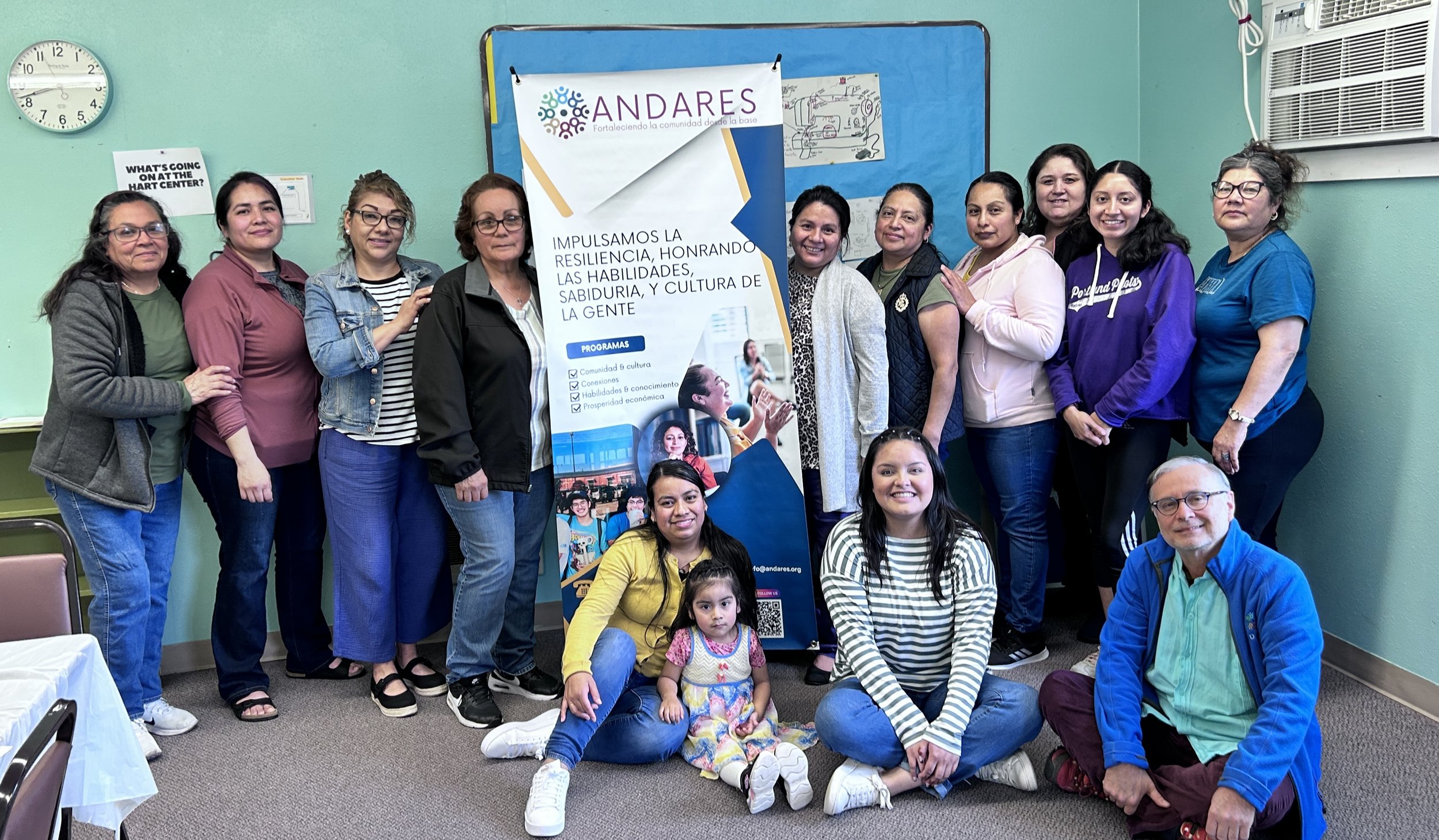Asset-Based Mapping in Harrisburg: People’s Representation of Community
Residents coming together to draw a map of Harrisburg.
Following the principles behind Asset-Based Community Development, which proposes that communities themselves can drive change by mobilizing their own sometimes unrecognized assets, ANDARES is working with a group of residents in Harrisburg, Linn County. In bi-weekly meetings, the project coordinator Keiri Lopez Rosel, facilitates reflection through sharing a dish, artistic expression, and group discussions upon topics of common interest. A central aspect of this work is drawing a map of the Harrisburg community, where participants represent both formal and informal institutions as well as describe the roles they have played in their lives. As they do that, participants imagine what can be done to strengthen the community and translate that into individual projects that are made a reality in collaboration with partner agencies. Next in our agenda is to bring to Harrisburg a mobile dental clinic, provide emotional support in a community-based setting, and start computer classes.
In addition to following the principles of Asset-Based Community Development, this project is inspired by the literature on asset mapping (see for example an article on the subject by the UCLA Center for Health Policy Research) and on ‘social cartography (see as an example an article on this approach published in Colombia)’. Although both asset mapping and social cartography refer to a process of community driven mapping that focuses on assets, the social cartography tradition found in Latin American community development projects has the added characteristic that it emphasizes that the actual coming together to draw the map strengthens internal community ties and therefore the process is as important as the outcome. That is precisely what ANDARES is doing in Harrisburg in partnership with this wonderful group of committed community residents.
We are grateful to the support that IHN-CCO and Linn County Public Health are providing us for this project. We are also grateful to the collaborations with the H.A.R.T. Community Center and Jackson Street Youth Services. The model we are developing in this project will be replicated in other rural communities in Linn and Benton Counties.
The Sharing in Community group after a day analyzing and celebrating their community.
The Harrisburg group translates individual maps into a collective map.


